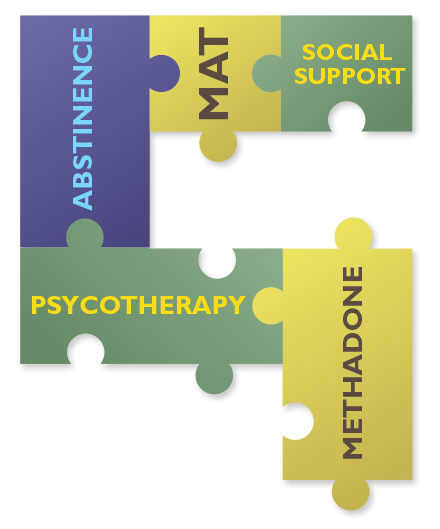An Alternative Approach
A growing body of experience supports an alternative approach: the treatment of BPW with higher doses of buprenorphine. Early experience demonstrates this strategy to be significantly more effective in treating withdrawal symptoms than non-agonists. This pathway demonstrates buprenorphine’s ability to abolish OWS and cravings while simultaneously transitioning the patient to medication-assisted therapy–based recovery. Future initiation pathways will likely skip the test doses and proceed to a single big dose (≥16 mg sublingually), which appears less likely to precipitate withdrawal and provides long-lasting protection from spontaneous withdrawal, cravings, and overdose. Protocols around high-dose initiation that account for appropriate patient selection and the possibility of provoking both protracted withdrawal and buprenorphine toxicity are being developed.
Explore This Issue
ACEP Now: Vol 39 – No 02 – February 2020
ILLUSTRATION: Chris Whissen & shutterstock.com
In Camden, New Jersey, our institution sits in an area with a high prevalence of opioid overdose and medical complications related to OUD. Our emergency department, recognizing its pivotal frontline role, waivered all of our physicians to prescribe buprenorphine and opened a multidisciplinary bridge clinic where emergency patients could be immediately referred to facilitate ongoing buprenorphine therapy while outpatient comprehensive addiction care is arranged. We currently have the ability to bridge 22 patients weekly.
As our program developed, we found that traditional buprenorphine titration was poorly suited to the demands of our emergency department. As a result, many patients—even those in moderate withdrawal—were discharged with a buprenorphine prescription for home initiation. When we examined our resources in the prehospital arena, we were alarmed to discover that, in 2019, more than one-third of patients treated in the field for overdose refused transport to the emergency department. This resulted in a significant health care gap as well as provider frustration and compassion fatigue with patients who required rescue repeatedly, in some cases with multiple overdoses in a single day. Our only opportunity to engage this population was during the brief EMS encounter; we therefore started a program aimed at administering buprenorphine after naloxone reversal and directly linking these patients to care, all within the constraints of a busy EMS system.
Though published evidence is scant, through experience we have learned that high doses of buprenorphine are less likely to precipitate withdrawal and can rapidly and effectively treat naloxone-precipitated withdrawal (NPW). We created an EMS protocol where we treat NPW with 16–24 mg of sublingual buprenorphine.
In the first months of this program, results have been overwhelmingly positive: Patients have done well, NPW symptoms have been relieved, BPW has not occurred, and scene times and unit availability have not been affected. Remarkably, we have found no difference in bridge clinic follow-up rates between patients who refuse versus allow ED transport. To date, almost 70 percent of patients with OUD rescued in the field have attended their first clinic appointment. This program also fundamentally changed the relationship of EMS providers to this underserved, vulnerable, and challenging population. “Just another overdose” is now an opportunity to make a difference.
Pages: 1 2 3 | Single Page




3 Responses to “Treatment Strategies for Precipitated Opioid Withdrawal after Naloxone Rescue”
October 5, 2020
Adam SchmidtThis article is absolutely brilliant. The number of patients, especially heroin users, that could benefit from this article is astounding. Withdrawal is what users fear more than anything in the world, possibly even over death. The idea that using 16+ mg of buprenorphine, regardless of the amount of naloxone present, is astounding. Apparently it really works too. Seriously, not enough people, especially medical professionals, will read this article and benefit from it’s wisdom. Kudos to the professionals who came up with this method. You WILL save lives with your research.
December 13, 2021
Marzieh GolbarVery informative and focused article. Would like to attend if suboxone macro-dosing presentations are coming up. Thanks!
May 8, 2023
Sandra Lee SigerVery informative, I work in a detox center and it was a very good article!